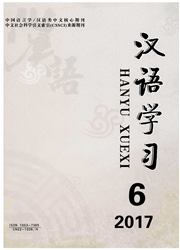
欢迎您!东篱公司
退出

 中文摘要:
中文摘要:
现代汉语中实际存在“主语+名词+副词+动词”和“主语+副词+名词+动词”这样两种并存的语序。其中,“名词+副词+动词”作谓语。本文分析这两种语序存在的理由,指出这种共时的语序变异是由于谓语部分的“名词+动词”实际上在结构分析上有两种可能,即分析成主谓结构或状中结构,从而对应于两条相互竞争的制约语序的原则:(1)副词(句子层面的副词除外)要尽量出现在动词前;(2)名词状语要紧邻动词。当谓语部分的“名词+动词”被分析为主谓结构时,第一条原则起作用,当被分析为状中结构时第二条原则就会起作用。在“主语+副词+名词+动词”的语序中,“名词+动词”有词汇化倾向,确切地讲是熟语化倾向。
 英文摘要:
英文摘要:
In Modern Mandarin, there exist two alternative word orders: "subject+noun+ adverb+verb" and "subject+adverb+noun+verb". This kind of word order variation is the result of competition of two principles, that is, adverbs (except for sentential adverbs) ideal- ly should precede verbs and nominal modifiers of verbs must immediately precede the verb. In the word order of "subject+adverb +noun +verb", the phrase of "noun+verb" is prone to be idiomized.
 同期刊论文项目
同期刊论文项目
 同项目期刊论文
同项目期刊论文
 A new analytical model for thermal stresses in multi-phase materials and lifetime prediction methods
A new analytical model for thermal stresses in multi-phase materials and lifetime prediction methods 期刊信息
期刊信息
